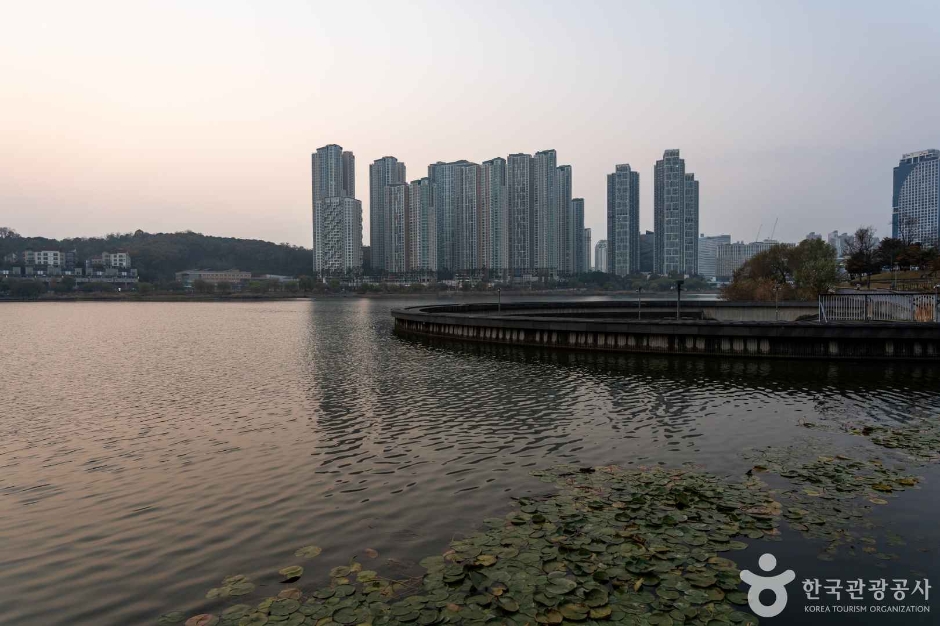E-Mart - Bundang Branch [Tax Refund Shop] (이마트 분당)
13.2Km 2024-04-22
134, Buljeong-ro, Bundang-gu, Seongnam-si, Gyeonggi-do
-
Lotte Mart - Yeongtong Branch [Tax Refund Shop] (롯데마트 영통점)
13.2Km 2024-04-22
1579, Bongyeong-ro, Yeongtong-gu, Suwon-si, Gyeonggi-do
-
Olive Young - Migeum Station Sageori Branch [Tax Refund Shop] (올리브영 미금역사거리점)
13.2Km 2024-06-27
1F, 168, Seongnam-daero, Bundang-gu, Seongnam-si, Gyeonggi-do
-
E-Mart - Suji Branch [Tax Refund Shop] (이마트 수지)
13.2Km 2024-04-22
203, Suji-ro, Suji-gu, Yongin-si, Gyeonggi-do
-
Gwangju Gonjiam Ceramic Park (광주 곤지암도자공원)
13.2Km 2021-10-23
727, Gyeongchung-daero, Gwangju-si, Gyeonggi-do
+82-31-799-1500
Located in Sam-ri, Gwangju in Gyeonggi-do, Gwangju Gonjiam Ceramic Park is largely comprised of a historic site from the Old Stone Age Era. This site was where porcelain was made and sold to the royal palace during the Joseon period. The park spans an area of over 6,611 ㎡, consisting of a sculpture park, ceramic shopping mall, cultural hall, performance hall, the Old Stone Age experiential madang, Jungang Lake Square, and other facilities that all visitors can freely enjoy within the park.
Mosaic Park, built based on art works regarding ceramics, and Gyeonggi Ceramic Museum, exhibiting art pieces in sequential order, are the venues for various hands-on programs as well as food culture, outdoor, performances, events and other programs taking place all year round. The park features a multicultural complex that meets every need in tradition, culture, art, education, play, resting and others.
Yongin Beomnyunsa Temple (법륜사(용인 문수산))
13.3Km 2021-11-05
126, Nongchonpark-ro, Cheoin-gu, Yongin-si, Gyeonggi-do
+82-31-332-5703
Beomnyunsa Temple, located at the foot of Munsusan Mountain in Yongin, Gyeonggi-do, consists of Geungnakbojeon Hall, Gwaneumjeon Hall, Samseonggak Hall, Beomjonggak Hall, and other buildings.
The sizable 430-square-meter Daeungjeon Hall was built in an open form of the Chinese character "亞" ("ah") in a Southern Buddhist style. The hall, made of indigenous red pine tree from Baekdusan Mountain, contains a 53-ton stone Buddha Statue (three times bigger in size than the statue in Seokguram Grotto) and a 33-ton stone Munsu Bohyeon Buddhist Saint Statue. On the left wall are 104 Sinjungnim (guardians of Buddhist law) as well as a Dongjin Boan Buddhist Saint Statue. There are also 1,250 Buddhist saint statues, symbolizing the devotion of Buddhist followers.
Olive Young - Bundang Migeum Station Branch [Tax Refund Shop] (올리브영 분당미금역)
13.3Km 2024-04-19
165, Seongnam-daero, Bundang-gu, Seongnam-si, Gyeonggi-do
-
Medictel Co., Ltd.(㈜메딕텔)
13.3Km 2025-07-29
(#428-36), 46 Dolma-ro, Bundang-gu, Seongnam-si, Gyeonggi-do
Medictel was established in February 2014. With over 10 years of experience, over 1,500 patients from all over the world have visited us so far. Medictel is a safe and reliable medical tourism company certified by the Korean government. We have an experienced team responsible for finding the best hospitals and doctors in Korea that are right for you.
Gwanggyo Lake Park (광교호수공원)
13.3Km 2025-05-22
165 Gwanggyohosu-ro, Yeongtong-gu, Suwon-si, Gyeonggi-do
Gwanggyo Lake Park is the largest lake park in the city center of Korea. The park is designed to blend the scenic nature of Gwanggyosan Mountain and the nearby reservoirs with urban culture. It consists of urban levees and 6 different themed "dumbeong," the Korean term for a pool of water.
Moda Outlet - Gonjiam Branch [Tax Refund Shop] (모다아울렛 곤지암점)
13.3Km 2024-04-18
907, Gyeongchung-daero, Chowol-eup, Gwangju-si, Gyeonggi-do
-
![E-Mart - Bundang Branch [Tax Refund Shop] (이마트 분당)](http://tong.visitkorea.or.kr/cms/resource/74/2881774_image2_1.jpg)
![Lotte Mart - Yeongtong Branch [Tax Refund Shop] (롯데마트 영통점)](http://tong.visitkorea.or.kr/cms/resource/55/2887855_image2_1.jpg)

![E-Mart - Suji Branch [Tax Refund Shop] (이마트 수지)](http://tong.visitkorea.or.kr/cms/resource/68/2888668_image2_1.jpg)
![Olive Young - Bundang Migeum Station Branch [Tax Refund Shop] (올리브영 분당미금역)](http://tong.visitkorea.or.kr/cms/resource/75/2881775_image2_1.jpg)

![Moda Outlet - Gonjiam Branch [Tax Refund Shop] (모다아울렛 곤지암점)](http://tong.visitkorea.or.kr/cms/resource/75/2890475_image2_1.jpg)
 English
English
 한국어
한국어 日本語
日本語 中文(简体)
中文(简体) Deutsch
Deutsch Français
Français Español
Español Русский
Русский